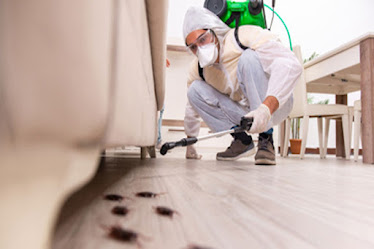Protect Your Home: Effective Strategies for Raccoon Removal
Raccoons may look cute and cuddly, but when they invade your home, they can cause significant damage and pose health risks to your family. These clever critters are known for their adaptability and persistence, making raccoon removal a challenging task for homeowners. In this article, we'll explore effective strategies for raccoon removal and how to protect your home from these unwanted guests.
Understanding Raccoon Behavior
Before we dive into raccoon removal strategies, it's essential to understand their behavior and what attracts them to your property.
What Attracts Raccoons to Your Home?
Raccoons are opportunistic creatures that are drawn to easy food sources and shelter. Some common attractants include:
- Unsecured garbage cans
- Pet food left outdoors
- Fallen fruit from trees
- Outdoor water sources
- Accessible attics or chimneys
Raccoon Nesting Habits
Raccoons are known for their adaptability when it comes to nesting. They can make their homes in a variety of locations, including:
- Attics
- Chimneys
- Sheds
- Crawl spaces
- Abandoned vehicles
Signs of a Raccoon Infestation
Knowing how to identify a raccoon infestation is crucial for effective raccoon removal. Some common signs include:
Physical Evidence
- Raccoon droppings (often resembling dog feces)
- Footprints or paw prints around your property
- Damage to your home's exterior, such as torn shingles or damaged soffits
Auditory Clues
- Scratching or thumping sounds coming from your attic or walls
- Vocal noises, such as growling, chittering, or whining
Visual Sightings
- Spotting raccoons on your property during the day (which can indicate a nearby den)
- Seeing raccoons entering or exiting your home
Effective Strategies for Raccoon Removal
Once you've identified a raccoon infestation, it's time to take action. Here are some effective strategies for raccoon removal:
1. Secure Potential Entry Points
One of the best ways to prevent raccoons from entering your home is to seal off potential entry points. This may include:
- Repairing damaged roofing or soffits
- Installing chimney caps
- Sealing gaps around windows and doors
2. Remove Food Sources
Raccoons are more likely to stick around if they have easy access to food. To discourage them from making your property their home, be sure to:
- Secure garbage cans with tight-fitting lids
- Bring pet food indoors
- Clean up fallen fruit and other potential food sources
3. Use Humane Traps
If raccoons have already made their way into your home, humane traps can be an effective way to remove them. When using traps, be sure to:
- Choose appropriately sized traps
- Place traps in areas where raccoons are active
- Check traps frequently and relocate captured raccoons promptly
4. Employ Scare Tactics
Scare tactics can be an effective way to deter raccoons from your property. Some options include:
- Installing bright lights or motion-activated sprinklers
- Using loud noises, such as radios or ultrasonic devices
- Applying unpleasant scents, like ammonia or hot pepper spray
5. Seek Professional Help
In some cases, raccoon removal may be too challenging or dangerous for homeowners to handle on their own. If you're unsure about how to proceed or have a severe infestation, it's best to seek the help of a professional wildlife removal service.
Preventing Future Raccoon Infestations
Once you've successfully removed raccoons from your home, it's essential to take steps to prevent future infestations. Some key prevention strategies include:
Maintaining Your Home's Exterior
- Regularly inspect your home's exterior for potential entry points
- Trim tree branches that provide easy access to your roof
- Keep your yard free of debris and potential nesting sites
Minimizing Attractants
- Store garbage cans in a secure location, such as a garage or shed
- Avoid leaving pet food outdoors
- Clean up outdoor eating areas promptly
Utilizing Deterrents
- Install motion-activated lights or sprinklers
- Use natural repellents, such as predator urine or essential oils
- Consider installing electric fencing around your property
The Importance of Raccoon Removal
Raccoon removal isn't just about protecting your home from damage; it's also about safeguarding your family's health. Raccoons can carry a variety of diseases that can be harmful to humans, including:
- Rabies
- Roundworm
- Leptospirosis
- Giardiasis
By taking prompt action to remove raccoons from your property, you can minimize the risk of disease transmission and keep your family safe.
Frequently Asked Questions
1. Can I remove raccoons on my own, or do I need professional help?
In some cases, homeowners can successfully remove raccoons using humane traps and exclusion techniques. However, if you're unsure about how to proceed or have a severe infestation, it's best to seek the help of a professional wildlife removal service.
2. Is it legal to trap and relocate raccoons?
Laws regarding raccoon trapping and relocation vary by state and municipality. Before attempting to trap and relocate raccoons, be sure to check your local regulations and obtain any necessary permits.
3. How can I tell if a raccoon has rabies?
Raccoons with rabies may exhibit unusual behavior, such as aggression, disorientation, or excessive salivation. If you suspect a raccoon has rabies, keep your distance and contact your local animal control agency immediately.
Conclusion
Raccoon removal can be a challenging and daunting task for homeowners, but with the right strategies and preventive measures, you can protect your home and keep your family safe. By understanding raccoon behavior, identifying signs of an infestation, and implementing effective removal and prevention techniques, you can take control of your home and enjoy a raccoon-free environment.


Comments
Post a Comment